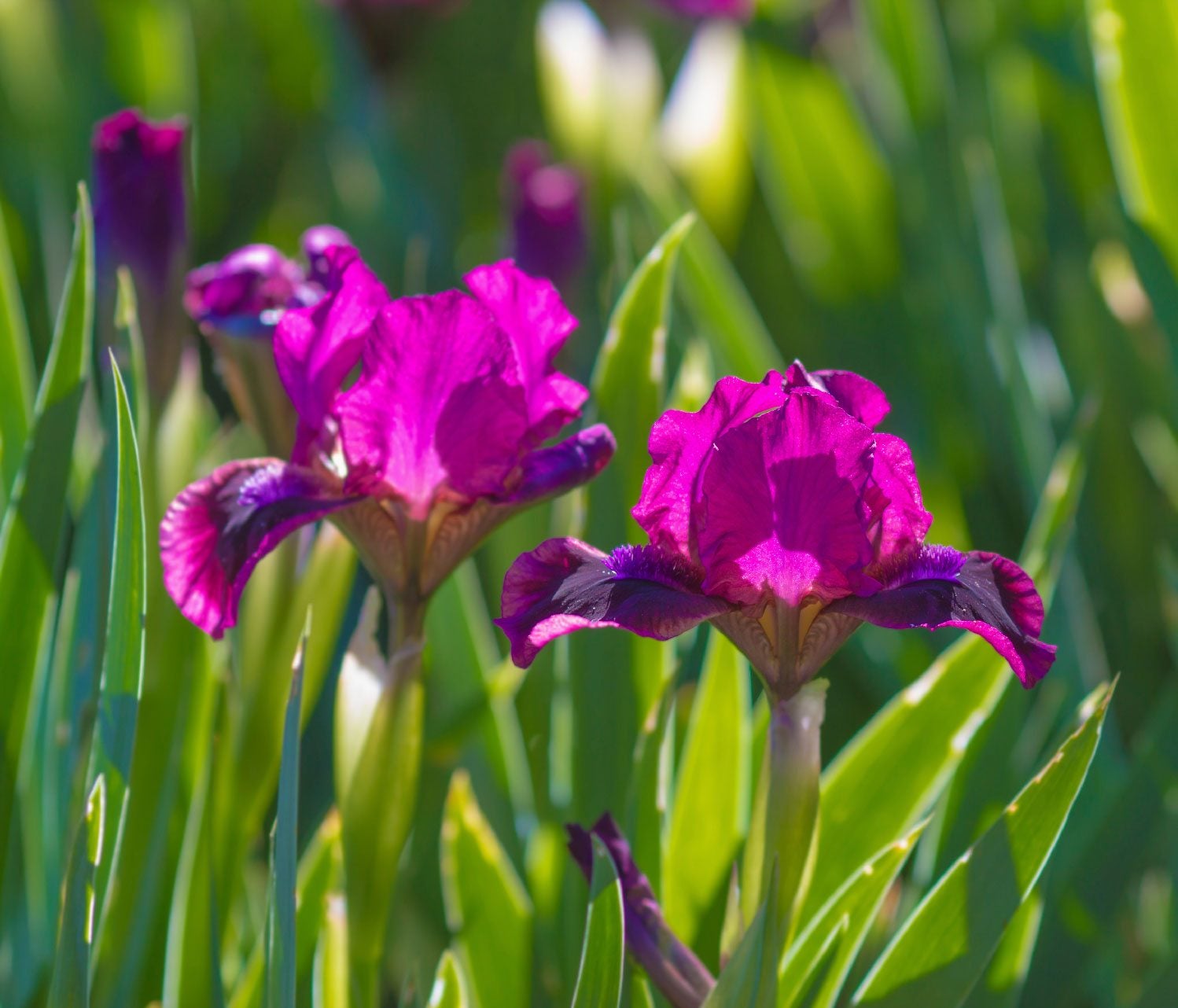Iris Care: Information On Iris Plant Care


Several varieties of iris plants (Iris spp.) exist, providing intricate and exquisite blooms in sunny areas of the landscape. Iris flowers begin blooming in late winter to early spring. A range of varieties provides extended color in the flower bed. Iris care is minimal once the growing iris is established. Iris plant care consists mainly of dividing the iris plants to assure continued blooms. Iris plants are abundant multipliers but once the rhizomes of iris plants become crowded, the iris flowers may be limited and the rhizomes need to be separated.
About Iris Flowers
The most commonly planted iris in the United States is the bearded iris. Height of the bearded iris plant ranges from 3 inches (7.5 cm.) for the shortest of dwarf iris flowers to 4 feet (1 m.) for the tallest of the tall bearded iris. Those iris plants in the intermediate group reach 1 to 2 feet (0.5 m.) in height. Iris flowers bloom in shades of purple, blue, white, and yellow and include many hybridized versions that are multi-colored. Louisiana ‘Black Gamecock' iris of the Louisiana series is such a deep purple it almost appears black. Siberian iris flowers are more dainty, but also available in a plethora of colors. The ‘Butter and Sugar' cultivar is a delicate yellow and white. The Spuria iris, planted along with the Siberian iris, offers blooms later in the spring once the bearded iris bloom is finished. Many of the flowers are ruffled and include a draping set of three outer sepals called falls.
Tips for Growing Iris
Plant rhizomes of the iris in a sunny location with well-draining, rich soil for optimum flowering. Leave room for growth between the rhizomes and do not bury the entire rhizome. Make sure roots are covered, but allow the iris rhizome to remain partially above ground to avoid root rot. Once blooms fade, leave the foliage to yellow before removing it from the flower bed. Plant so later blooming specimens cover the remaining foliage. As with many spring blooms, the foliage is sending nutrients to the rhizome for next year's flowers. This is one of the difficult parts of iris care, as many gardeners wish to immediately remove foliage once flowering is done. Other iris plant care includes watering during dry spells, fertilization before flowers appear and deadheading of the spent blooms. However, most clumps of iris provide flowers with no maintenance. Iris is drought-tolerant and may be part of a xeric garden; keep in mind, even drought-tolerant plants benefit from occasional watering.
Gardening tips, videos, info and more delivered right to your inbox!
Sign up for the Gardening Know How newsletter today and receive a free copy of our e-book "How to Grow Delicious Tomatoes".

Becca Badgett was a regular contributor to Gardening Know How for ten years. Co-author of the book How to Grow an EMERGENCY Garden, Becca specializes in succulent and cactus gardening.
-
 4 Superfast Composting Methods: Turn Waste Into Garden Gold In 30 Days Or Less
4 Superfast Composting Methods: Turn Waste Into Garden Gold In 30 Days Or LessTry the fastest composting methods to turbocharge your pile and transform kitchen scraps and garden waste into finished compost in just a few weeks.
By Mary Ellen Ellis
-
 Best Spider Plant Soil – Complete Soil Guide And Expert Tips For Keeping Plants Happy
Best Spider Plant Soil – Complete Soil Guide And Expert Tips For Keeping Plants HappySpider plants are fun and easy plants to grow, but what is the best soil for a spider plant? Selecting the right soil is important so they can thrive.
By Bonnie L. Grant